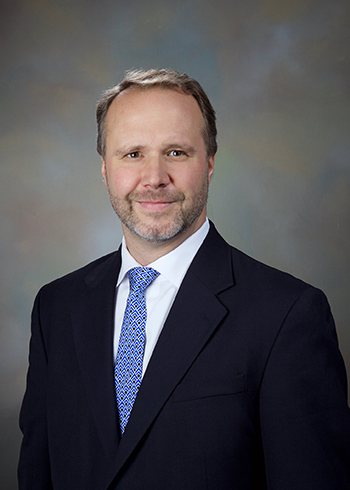Recent News
NQVL Design Phase Award
October 1, 2025
CHTM Joins NSF's NQVL Pilot Projects
August 9, 2024
OSE PHD, Dr. Xuefeng Li - Wins The Outstanding Interdisciplinary Graduate Programs Award
May 10, 2024
Dr. Ali Rastegari - 2024 OSE Best Dissertation Award Winner
May 10, 2024
News Archives
Dr. Brad Boyce to give talk at CHTM
November 12, 2018

Dr. Brad L. Boyce
Dr. Brad Boyce, CINT Scientist and Distinguished Member of the Technical Staff at Sandia National Laboratories will be giving a talk hosted by CHTM on Novmber 20th, 2018.
Please join us at CHTM, room 101 on the 20th at 11am on his talk entitled, "Rare microstructural events limit the mechanical reliability of materials."
A copy of the flyer can be found here.
Abstract:
While the field of materials science has typically focused on improving the average properties of materials, it may be as important to control the rare microstructural features that govern the lower-bound properties necessary for reliability. To illustrate this point, I will draw on four distinct examples. The first example is in silicon microsystems where the failure-limiting flaws are sidewall cusps caused by etching and grain boundary grooves. By developing high-throughput testing methods and 3-parameter Weibull analysis, it is possible to identify the worst-case threshold for strength-limiting flaws. In the second example, the theme of high-throughput testing is transferred into the domain of metal additive manufacturing. In metal structures produced by the laser powder bed fusion process, typical failures originate at lack-of-fusion porosity. However, the worst-case flaws occur in the rare scenario when these pores link up, forming an interconnected network of pores that intersect the free surface. As porosity is eliminated through process improvements, the failure of additive metal parts will eventually be limited by the underlying grain structure. In the third example, I explore the critical grain boundary configurations that give rise to the onset of ductile rupture. While many alloys nucleate voids at matrix-particle interfaces, particle-free ductile metals nucleate defects through a series of competing/collaborating dislocation-mediated mechanisms. In the fourth example, nanocrystalline metals, which can possess strengths comparable to the strongest commercially available alloys, are shown to be limited in their fatigue resistance due to the onset of fatigue-induced grain growth. This weakest-link failure event associated with abnormal grain growth only affects a miniscule fraction of grains, e.g. 1 in 109. Through the use of in-situ fatigue studies using synchrotron diffraction and transmission electron microscopy we can find the ‘needle in the haystack’ and establish the critical conditions for grain growth. Ultimately, by controlling this grain growth process we can produce nanocrystalline metals with superior mechanical reliability.
Biography:
Dr. Boyce is a Distinguished Member of the Technical Staff at Sandia National Laboratories. Dr. Boyce received the B.S. degree from Michigan Technological University in 1996 in Metallurgical Engineering and the M.S. and Ph.D. degrees in 1998 and 2001 from the University of California at Berkeley. Dr. Boyce joined the technical staff at Sandia in 2001 where his research interests lie in micromechanisms of deformation and failure. He was promoted to Principal Member of the Technical Staff in 2005, and received the Distinguished appointment in 2015. In 2017, Dr. Boyce joined the Center for Integrated Nanotechnologies in the in-situ characterization and nanomechanics thrust. He has published over 100 peer reviewed articles on topics such as microsystems reliability, nanoindentation, fracture in structural alloys, weld metallurgy, ocular tissue viscoelasticity, and fatigue mechanisms. One effort, the Sandia Fracture Challenge, a blind round robin assessment of computational modeling predictions, has engaged over 50 institutions worldwide. Building on this success, Dr. Boyce formed the Structural Reliability Partnership, now with ~$4M in annual leveraged funds from member institutions. Dr. Boyce is the Director of Programming for TMS, the Minerals Metals and Materials Society. He also serves on Editorial Boards for Materials Research Letters, as well as Fatigue and Fracture of Engineering Materials and Structures. He has served as a guest editor for Thin Solid Films, Experimental Mechanics, International Journal of Fatigue, and International Journal of Fracture. Dr. Boyce is a past recipient of the Hertz Foundation fellowship, TMS Young Leader award, and ASM’s Marcus A. Grossman Young Author award.
Acknowledgements:
Sandia National Laboratories is a multimission laboratory managed and operated by National Technology and Engineering Solutions of Sandia, LLC., a wholly owned subsidiary of Honeywell International, Inc., for the U.S. Department of Energy’s National Nuclear Security Administration under contract DE-NA-0003525.


